These two New World gulls are rare vagrants to Britain and Ireland. Though fairly distinct from our more regular European species, their very rarity can make them difficult to distinguish, especially from each other, while some of our more familiar gulls can provide extra confusion in certain plumages. Josh Jones provides all the information you need to ascertain whether you have managed to uncover one of these rare larids in the field.
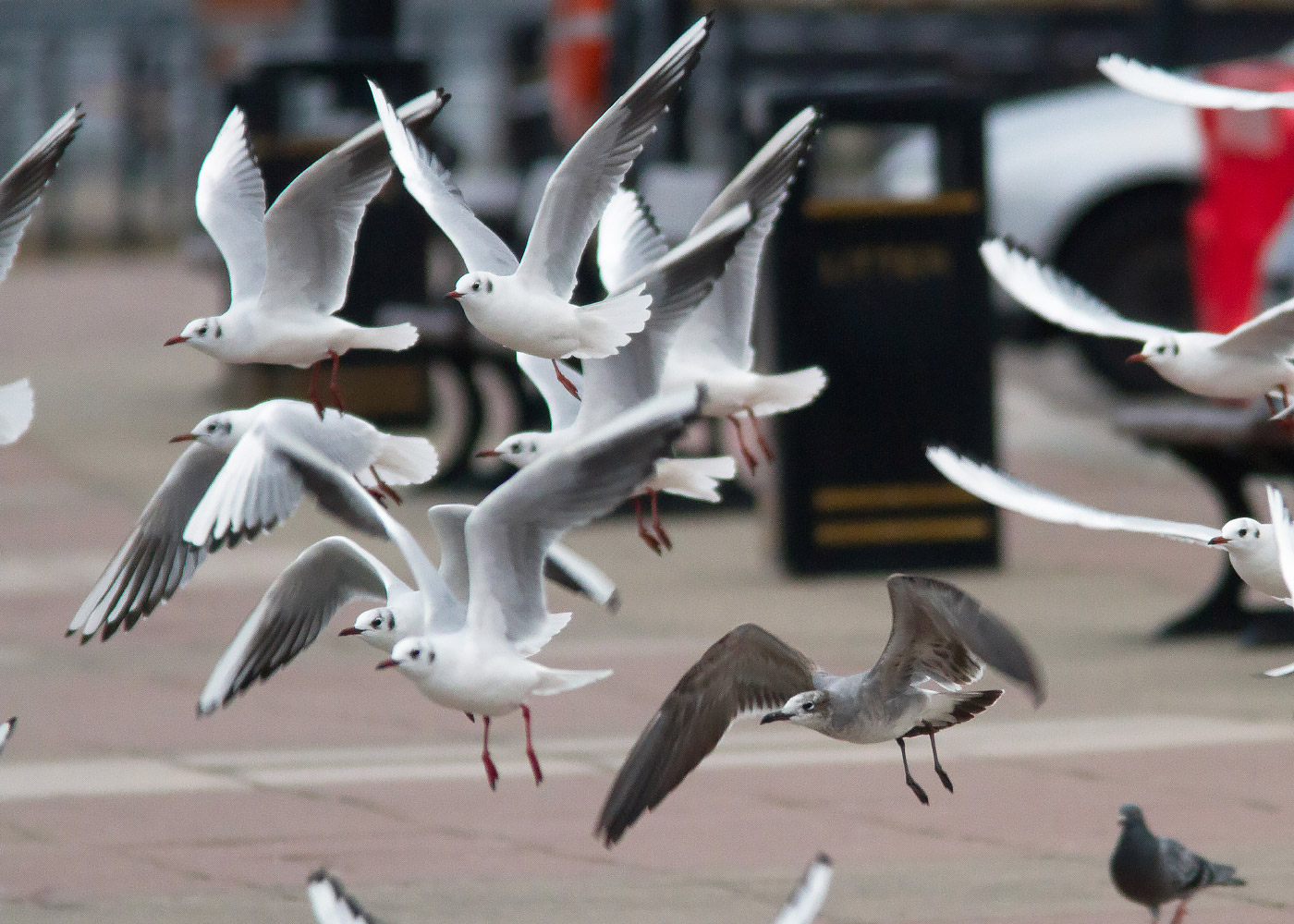
Laughing Gull (New Brighton, Cheshire, 9 February 2015). When seen among a flock of Black-headed Gulls, which is often the case with vagrants in Europe, a first-winter Laughing Gull really stands out. The overall swarthy appearance, with dark bare parts, mid-dark grey plumage and extensively dark tail, contrasts greatly with the pale whitish-grey plumage of the more familiar species (Gary Woodburn).
Two New World gull species – Franklin's and Laughing Gulls – are rare vagrants to Britain and Ireland. The total number of records of the former across both countries is around 120, with Laughing more than twice as regular, with some 260 accepted occurrences.
This discrepancy belies the truth somewhat, though, as the devastating Hurricane Wilma led to an unprecedented invasion of Laughing Gulls in early November 2005 – perhaps as many as 70 individuals arrived, many of which went on to winter. In reality they are roughly as rare as each other nowadays, with one or two of each seen in an average year – although both species are seemingly prone to small influxes, presumably dependent on conducive weather conditions leading to arrivals in late autumn.
Either species can show up at any time. Looking at the relatively even balance of records through the year, finding one of these exciting birds is every bit as possible on a hot July afternoon as on a freezing January morning.
Here we look in detail at how to separate them from each other, as well as considering some plumages of more familiar species that may pose identification pitfalls. Both species are 'three-year gulls' (they take three years to reach adult plumage), and have medium-dark upperpart colouration similar to (or slightly paler than) Lesser Black-backed Gull. They are generally quite distinctive, so ID issues usually involve separating one from the other, although some European species can provide confusion in certain plumages.
Laughing Gull
This species breeds in large colonies along the east coast of North America north to Maine, as well as in the Gulf of Mexico and the Caribbean. Northern populations move the greatest distances south to winter, with numbers swelling in Florida and the Caribbean outside the breeding season, and others venturing to northern South America, south to Peru and northern Brazil. The world population is estimated at 400,000 pairs.
This medium-sized gull is similar in size and stature to a Common Gull. Adults show a dark upperwing (Kodak Grey Scale 7-10) with blacker wing-tip (fully black on p9-10; partially black to p6), with a contrasting white trailing edge to the wing in flight that is broadest across the secondaries.
In non-breeding plumage, the bill and legs are blackish, while the head is largely white albeit with some darker markings, ranging from a solid dark eye mask to residual greyish spots on the ear coverts. In breeding plumage (March-July), a velvet-black hood is developed, which may look sooty grey in strong sunlight. The bill and legs flush a deep reddish colour, although the latter tend to still look dark in the absence of close views. The white eyelids particularly stand out in this plumage.
In the absence of any primary mirrors, the wing-tip looks largely blackish in flight – particularly from below. The wings are long but fairly broad, looking broader than Black-headed Gull and more akin to Common Gull without the white mirrors.
Second-winter birds are largely similar to adults, although they tend to show a greater extent of black in the wing-tip – blackish primary coverts should be evident and the white primary tips are absent. Residual dark markings may also still be visible in the tail, while a sooty wash to the neck, breast sides and flanks reduces the neat contrast between the dark-grey upperparts and white body of the adult. As well as the primary pattern, second-summer birds generally have a duller hood and less flushed bare parts – but are otherwise very similar to adults.
First-winter Laughing Gulls are very distinctive, being particularly swarthy in their appearance. Wing coverts and tertials tend to be uniform dark chocolate brown and the head, neck and flanks are extensively smudged with grey, making the bright white eyelids really stand out. The belly is generally the whitest part of the bird, but a clean white rump starkly contrasts with the mostly black tail at this age.
Franklin's Gull
A true long-distance migrant, Franklin's breeds at freshwater marshes on the prairies of North America and winters along the Pacific coast of South America from Peru to southern Chile. It was previously much more abundant, with a decline of up to 90% noted between 1950 and 2000. Its world population now stands at around 350,000 pairs. This epic annual migration cycle seems to make it more susceptible to spectacular vagrancy, and it has been recorded in locations as diverse as Australasia, inland Africa and central and eastern Asia.
Franklin's is superficially similar to Laughing Gull at all ages, particularly at rest. However, it is a smaller bird, falling between Bonaparte's and Black-headed Gulls in size, and its upperparts average slightly paler (Kodak Scale 6-9). Unusually, it also undertakes two complete moults each year – once after breeding and another on reaching its wintering grounds.
At all ages, structure can be a good clue as to the identification: it tends to look 'cuter' than Laughing, with a smaller, rounder head, daintier bill and bigger eye. The white eyelids are even more pronounced than in its larger cousin.
Adults are largely similar in appearance to adult Laughing, with the greatest differences seen in flight – Franklin's has a broader-looking wing-tip that is accentuated by a striking primary pattern. The primaries are essentially white tipped, albeit with a variable amount of black subterminal markings from p6-10. This is easily discernible both at rest and in flight, with the wing-tip looking distinctly whitish.
As in Laughing, breeding-plumaged Franklin's show a glossy black hood, although the bill tends to be noticeably redder and so contrasts more. It may also retain the hood well into autumn. Winter birds show an extensive 'half-hood'. Second-winter Franklin's shows much more black in the wing-tip and thus can be trickier to separate from Laughing.
First-winters tend to look paler and crisper overall when compared to Laughing, with a clean white body and neck contrasting with a strong, dark half-hood. The upperwing coverts are generally a noticeably paler brown than in Laughing, while birds of this age show a neat black tailband (rather than all-black tail).
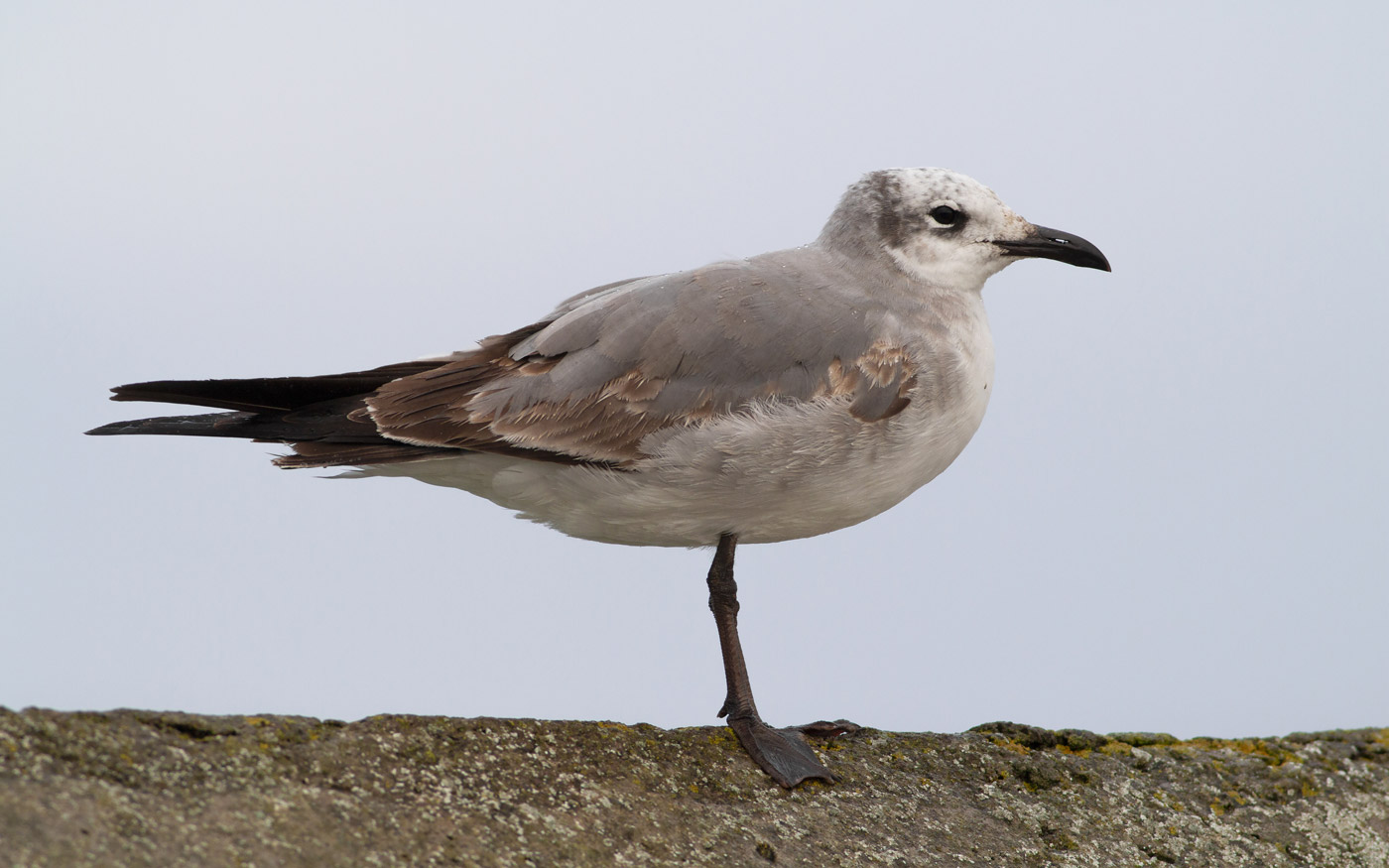
First-winter Laughing Gull (Ballycotton, Co Cork, 16 February 2014). Largely mid-grey in colour, this young Laughing Gull appears generally dark, being 'whitest' around the head, chest and belly. The flanks and neck sides are extensively washed with grey, and the coverts and tertials are a uniform chocolate brown. The head pattern consists of diffuse markings on the ear coverts and hindneck, with some dark markings also around the eye. Both the bill and legs are blackish (Josh Jones / www.joshrjones.com).
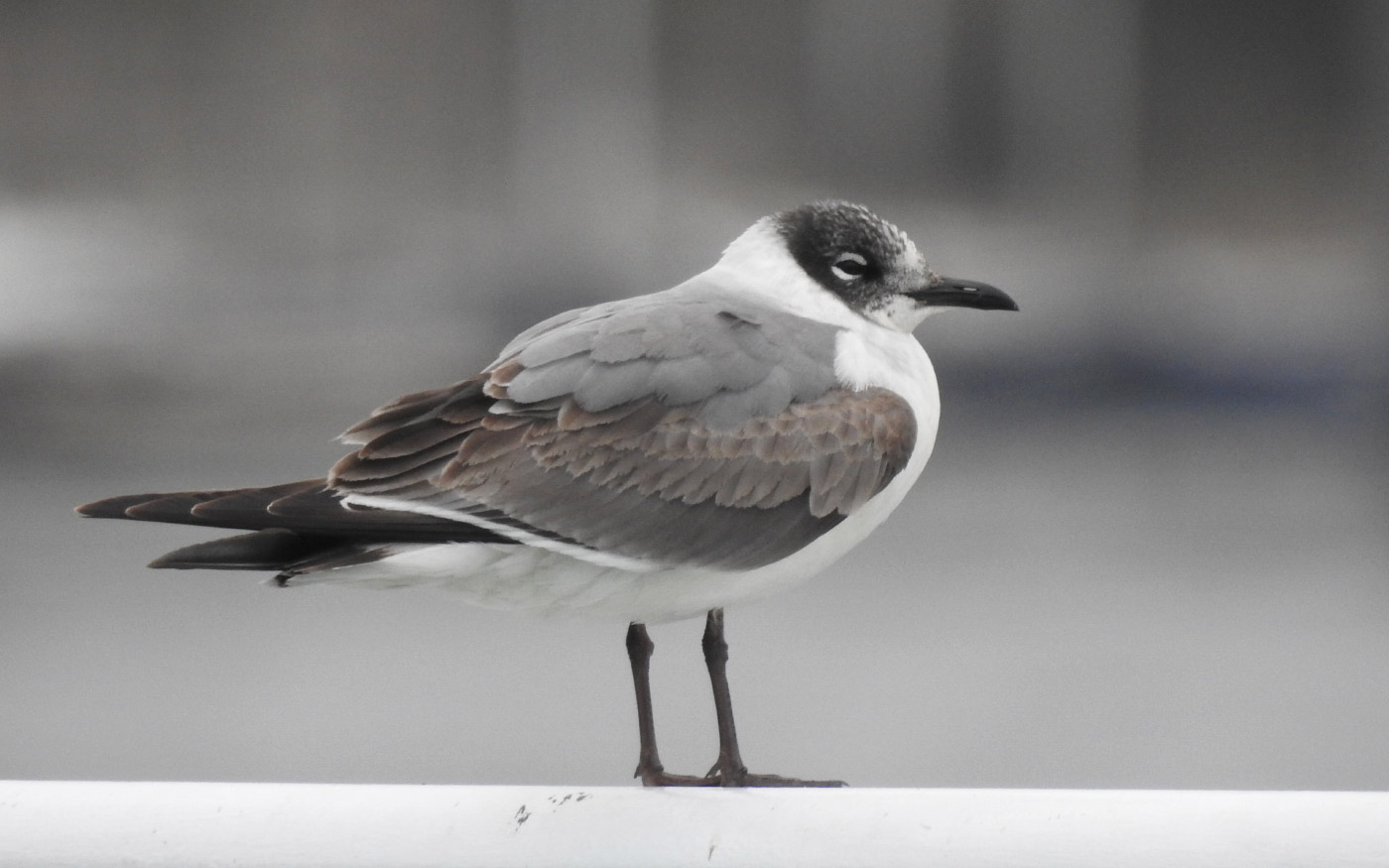
First-winter Franklin's Gull (Bordeaux, France, 12 January 2020). Although upperpart tone and bare part colour are similar to those of the Laughing Gull above, there are several clues that this is a Franklin's. The blackish 'half-hood' is a tell-tale feature of this species in winter, making the white eyelids really stand out. The neck and body are white, giving the bird an overall cleaner and more contrasting look compared to Laughing. Despite having nothing for direct comparison, the bill appears shorter and more slender and the bird overall seems more lightweight and squat (Loup Noally).
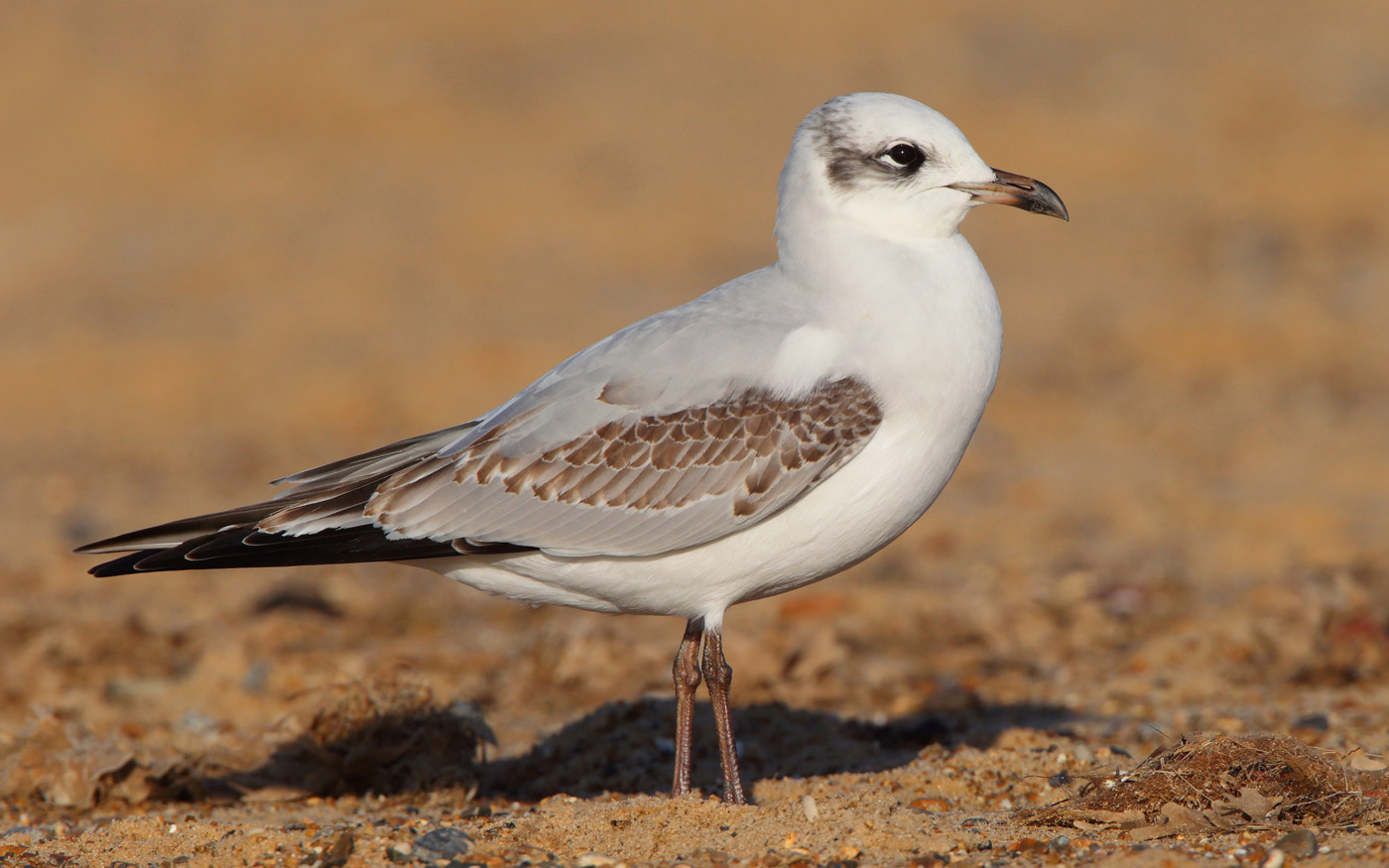
First-winter Mediterranean Gull (Great Yarmouth, Norfolk, 14 December 2013). Birds of this age bear a superficial resemblance to Laughing Gull of the same age, especially with such a similar head pattern, but the upperparts are a much paler shade of grey and the underparts are very white, giving a much paler impression overall. While 'Meds' of this age often have dark legs, another clue is that the bill usually shows at least some paler coloration on the basal two-thirds (Kit Day).
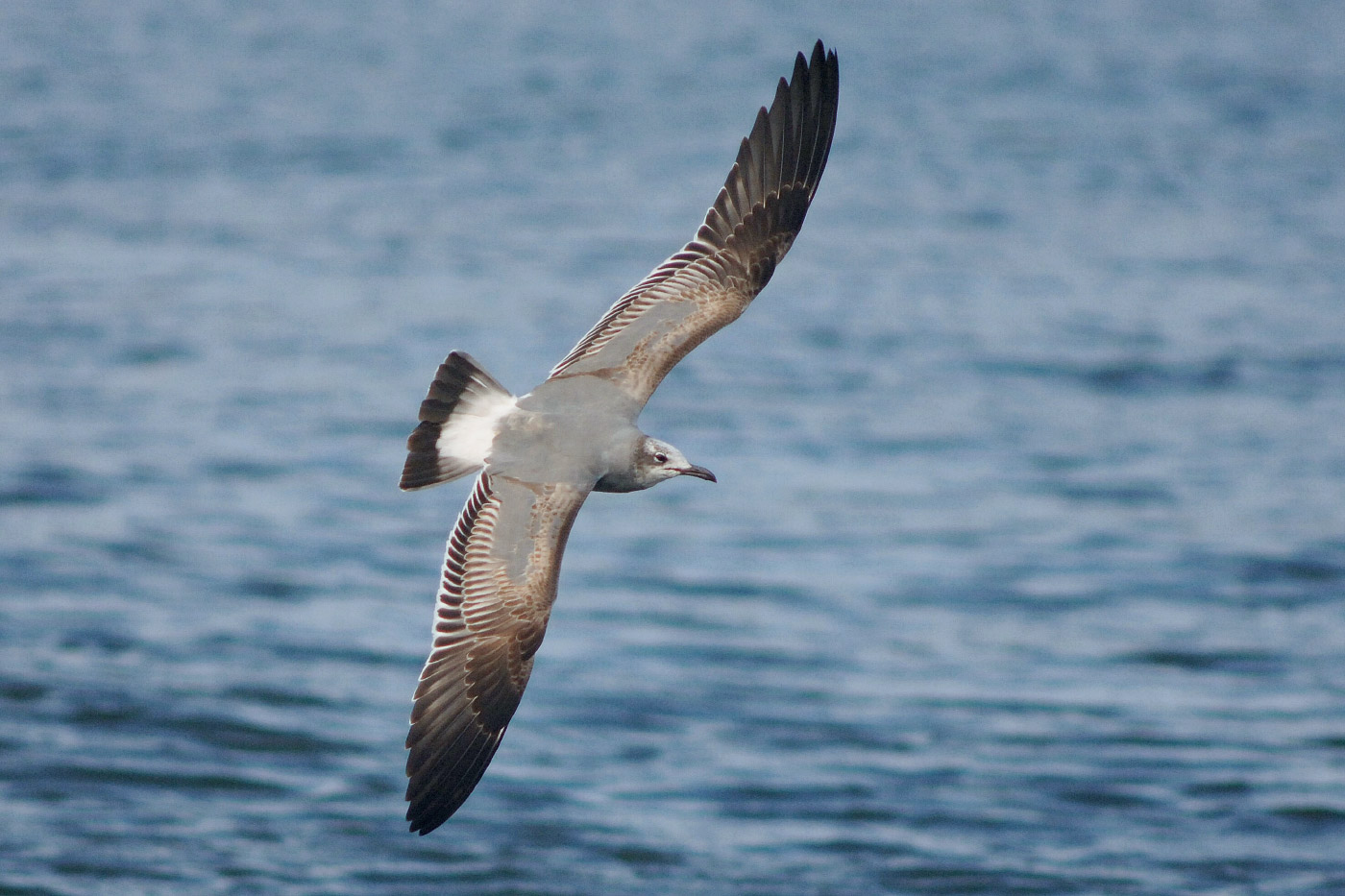
First-winter Laughing Gull (New Brighton, Cheshire, 29 March 2015). From above, a first-winter Laughing Gull appears very dark. The mid-grey upperparts, extensively black primaries, greyish wash to head and neck and largely black tail all enhance this impression, with this last feature contrasting with a white rump. Note also the long, slightly drooping bill and long-winged appearance (Julian Bhalerao).
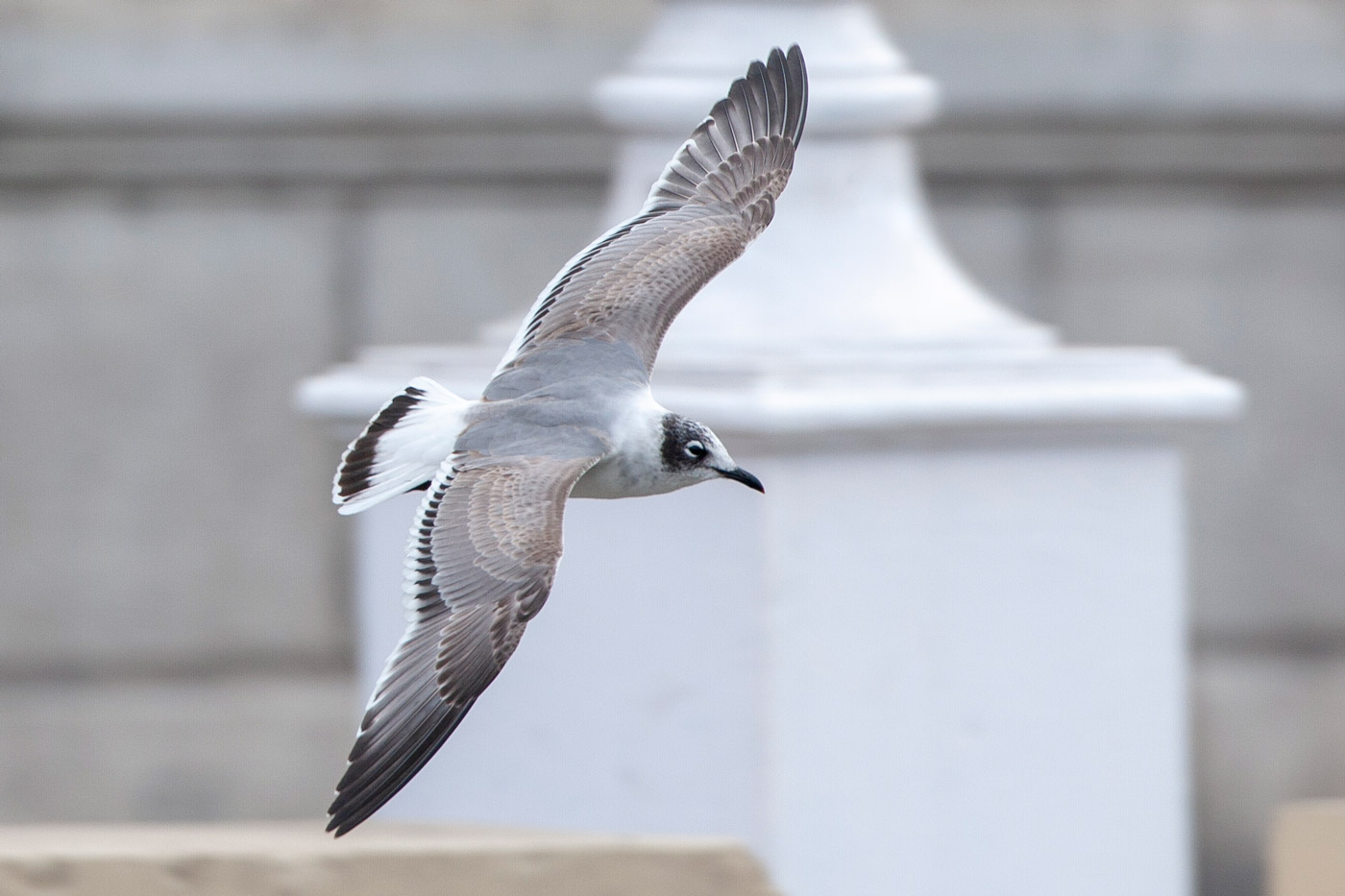
First-winter Franklin's Gull (Santurtzi, Spain, 5 February 2006). This Franklin's Gull feels like a smaller bird than the preceding Laughing, with a much daintier bill and more compact appearance overall. Rather than the darker tail of Laughing, Franklin's possesses a thin black tail band on an otherwise largely white tail. Another good hint is the well-marked 'half-hood', which gives the impression of a bird moulting into breeding plumage (even if that isn't actually the case). The primaries are also less extensively blackish and there's a broader white trailing edge to the wing (Rafael Armada / www.agami.nl).
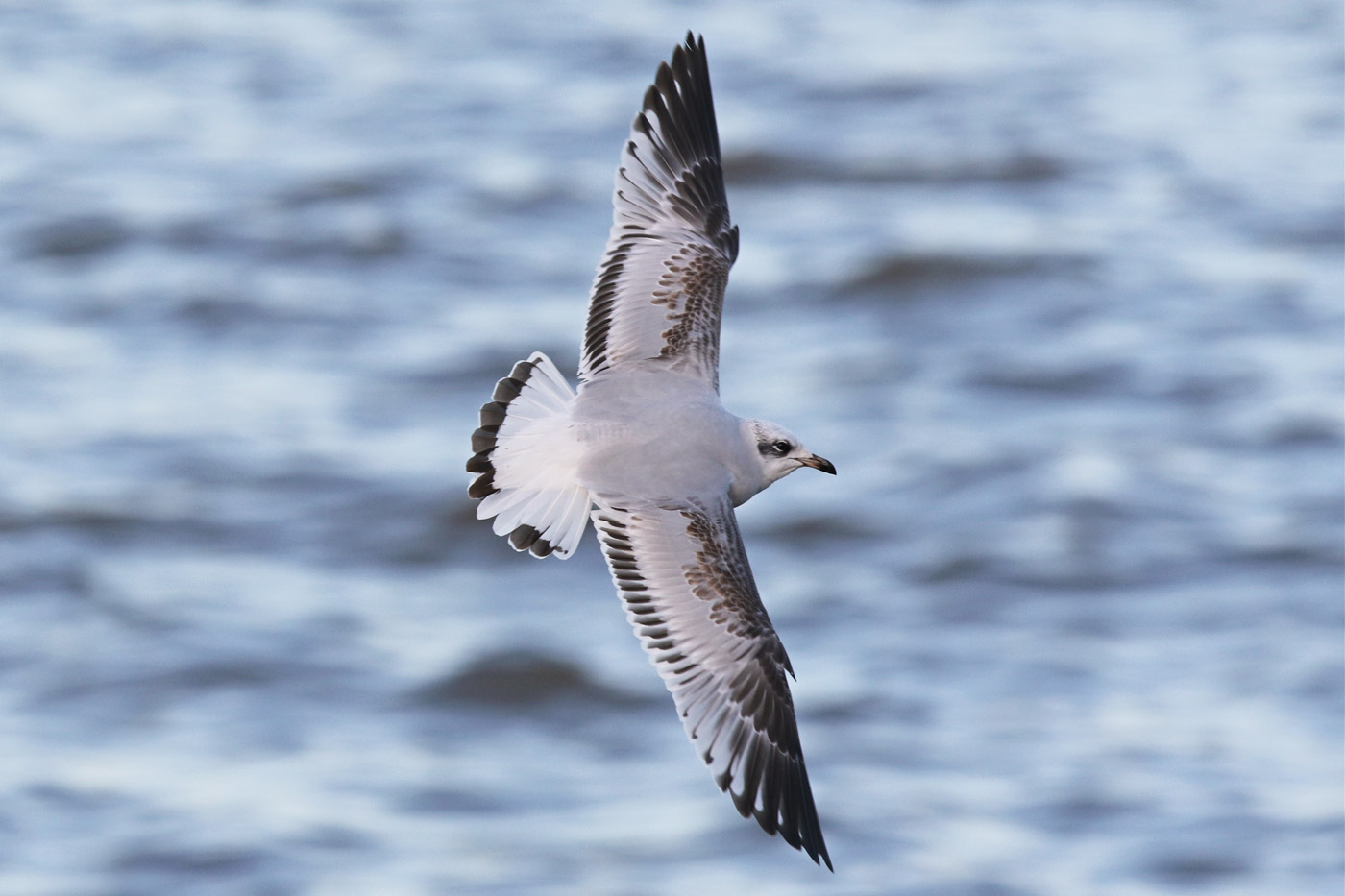
First-winter Mediterranean (Thamesmead, London, 18 January 2020). The slightly drooping bill and dark markings around the eye and ear coverts, which create a 'masked' appearance, may invite confusion with first-winter Laughing. However, note this Mediterranean Gull's extensively pale grey upperparts and largely white tail, with just a thin black tail band – a pattern not seen in Laughing. The bill is also noticeably pale on the basal half (Richard Bonser).
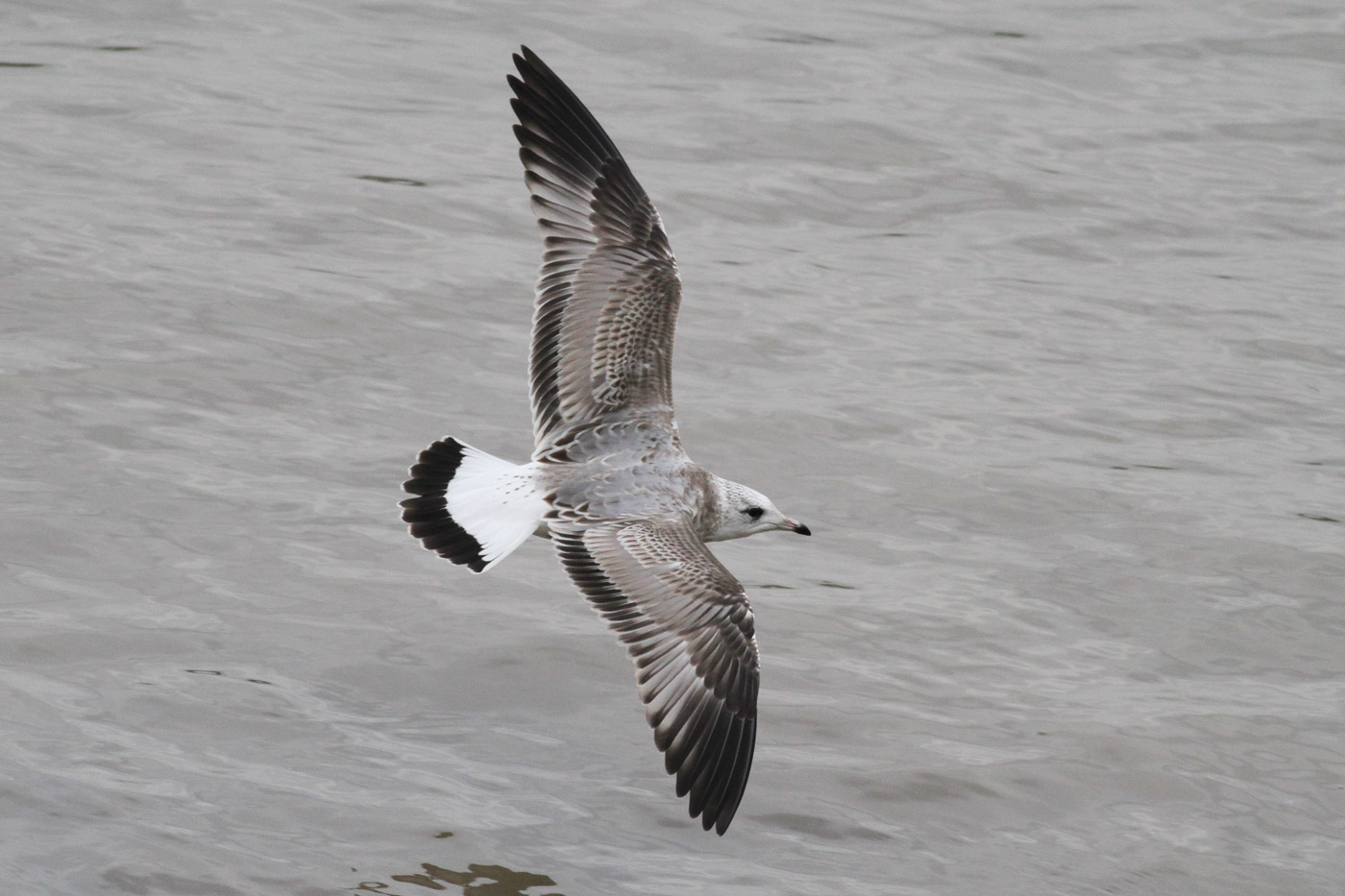
First-winter Common Gull (Greenwich, London, 15 January 2019). Superficially similar to both Laughing and Franklin's Gulls in flight, this first-winter Common Gull should nonetheless be easily ruled out as a confusion species with good views. The basal two-thirds to the bill is almost always obviously pale, often being well defined and pinkish as in this bird; the leg colour – if it could be seen – would also be a pale pinkish-grey. Add to that the paler tone of grey to the upperparts and the indistinct flecking or streaking on the head (rather than a defined pattern), and this is a relatively straightforward ID (Dante Shepherd).
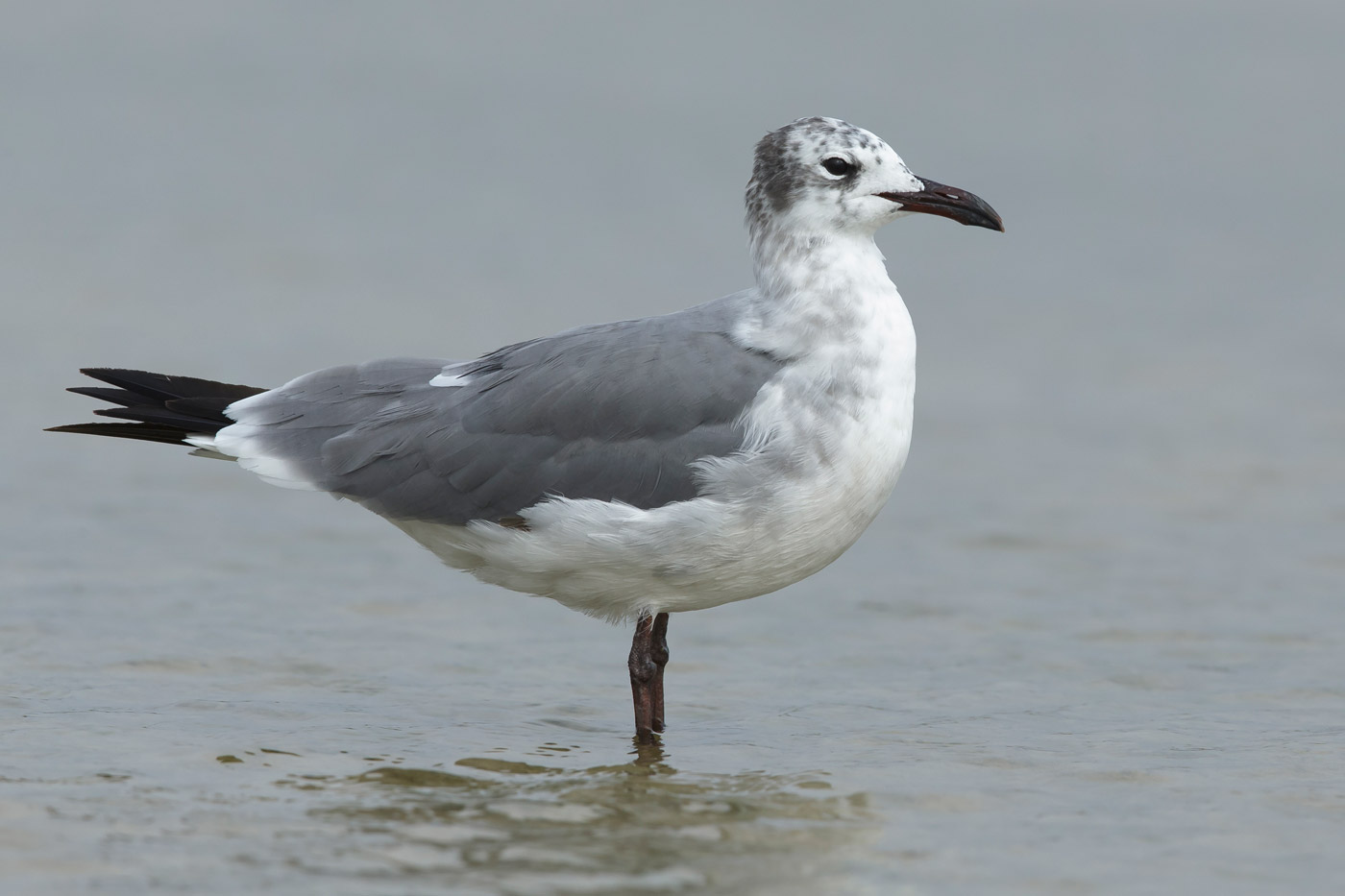
Second-winter Laughing Gull (Texas, USA, 28 April 2016). This Laughing Gull is approaching its second birthday, and is in more of a 'second-spring' plumage than a true second-winter, with blackish flecking appearing on the crown, nape and cheeks as the bird develops a summer hood. This may invite confusion with a similar-aged Franklin's Gull; however, note the extensive greyish wash to the neck sides and upper flanks, the long and heavy-looking bill, slightly 'dopey' facial expression, lack of white in the primaries and a thin white trailing edge to the tertials (Brian E Small / www.agami.nl).
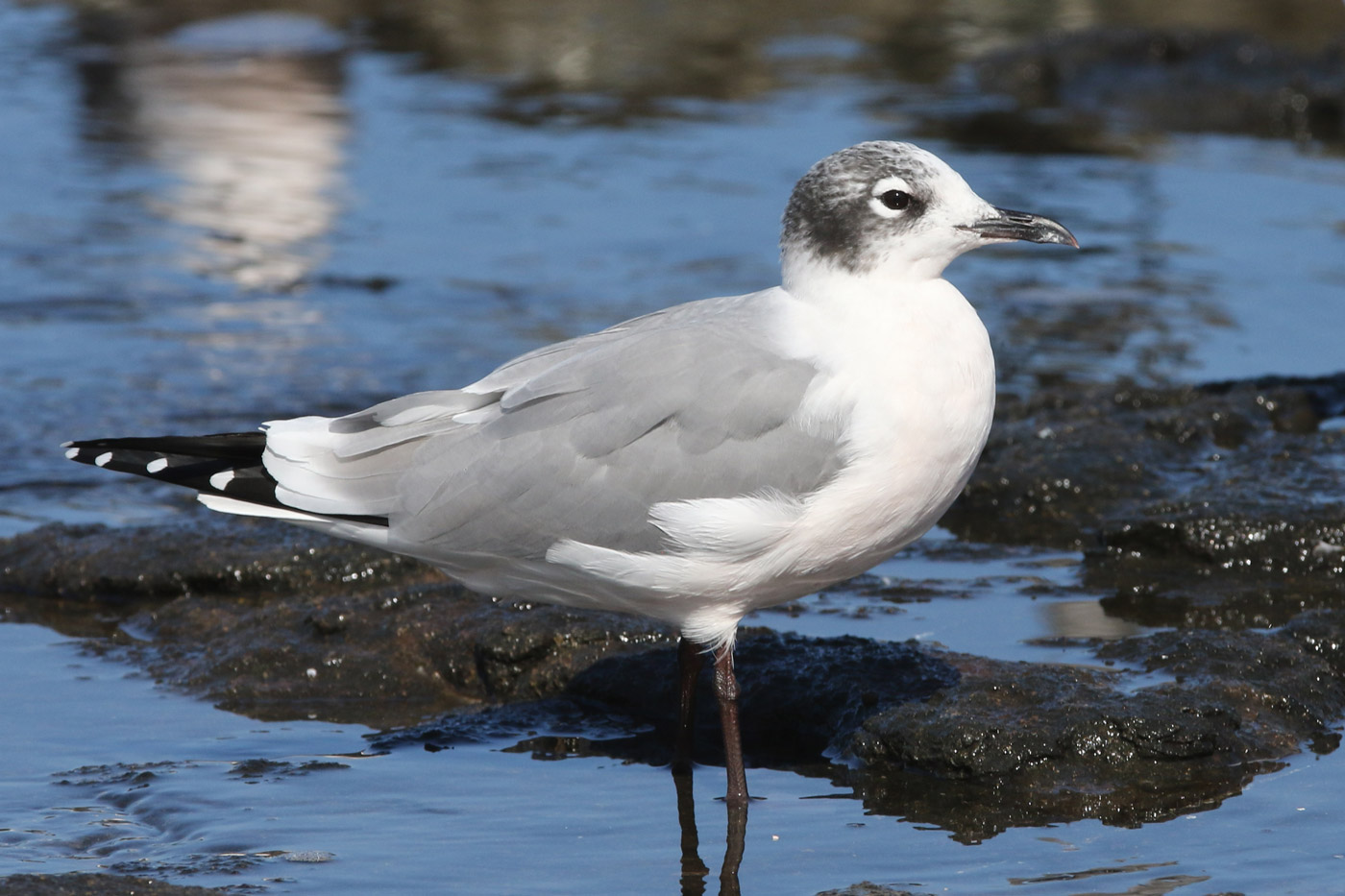
Second-winter Franklin's Gull (Arica, Chile, 10 April 2017). In contrast to the previous Laughing Gull, this Franklin's of the same age shows a clean white neck and body, with a very pale pinkish flush to the underparts (typical in this species to a varying degree). Note also the obvious white tips to the fresh primaries, which will have just been regrown ahead of spring migration. Finally, this bird is clearly smaller and 'cuter' looking than the often 'ugly' expression of Laughing, with more prominent white eyelids (Richard Bonser).
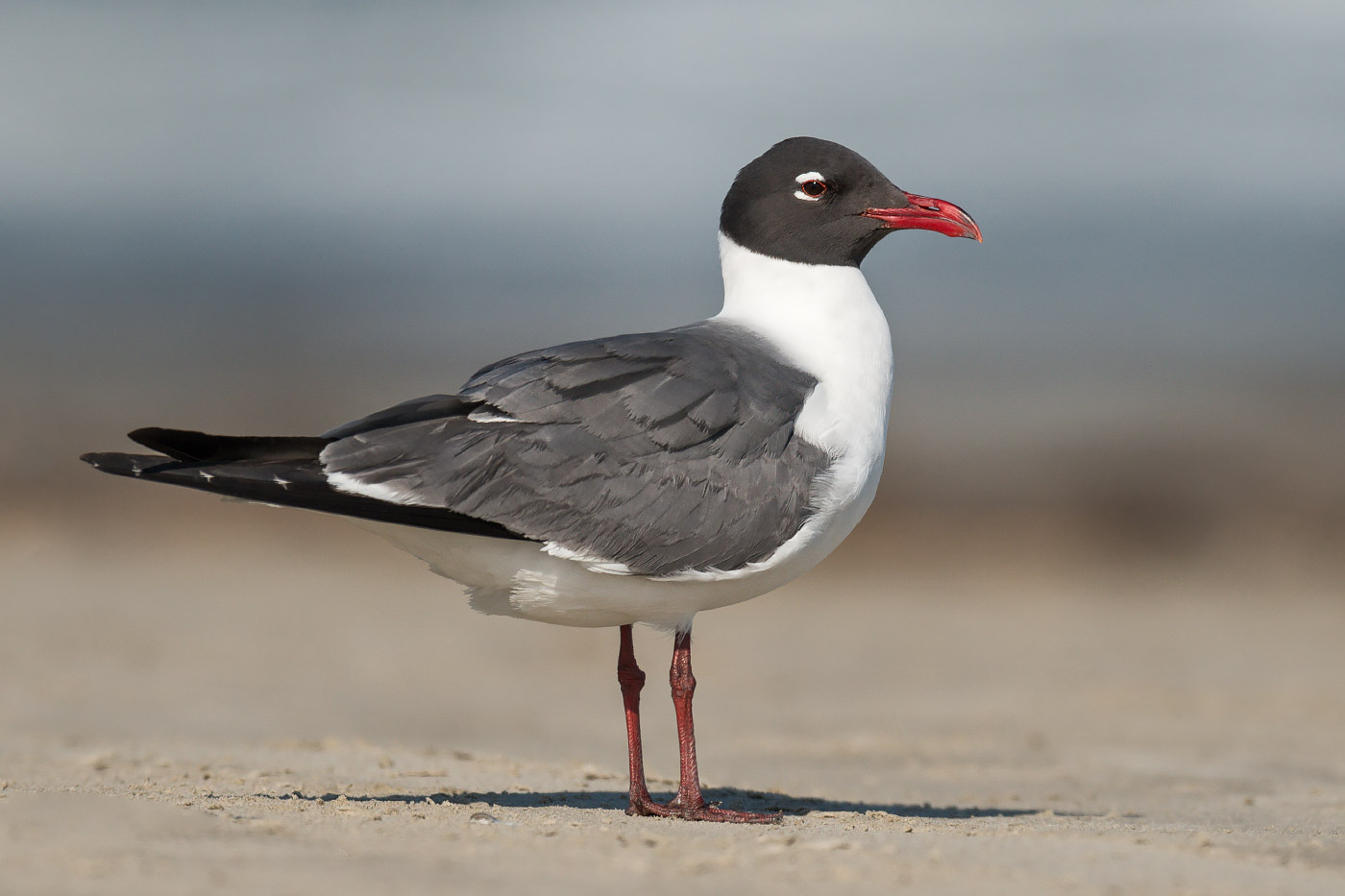
Adult summer Laughing Gull (Texas, USA, 22 April 2013). On average, Franklin's Gull has a redder bill than Laughing during the breeding season, but this isn't always the case, as this spring adult Laughing demonstrates. Hormones are at work here, with the bill (and even the legs) strongly flushed red – though this quickly fades to a more typical blackish as the breeding season wears on. Note the overall robust structure of this bird and, crucially, the almost total lack of white in the primaries (E J Peiker / BIA).
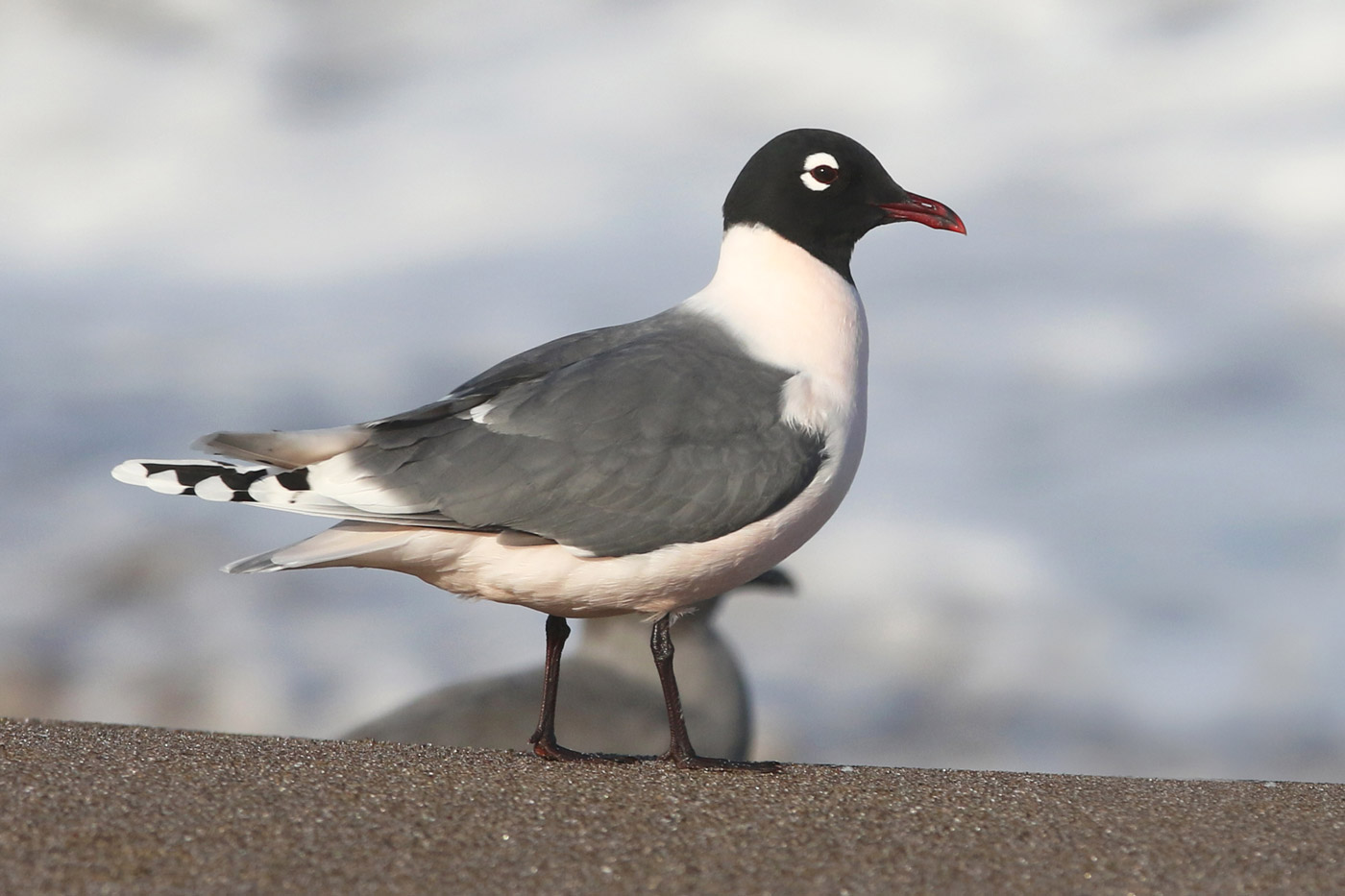
Adult summer Franklin's Gull (Arica, Chile, 10 April 2017). Breeding-plumaged Franklin's Gull is a truly beautiful bird. The huge white eyelids, contrasting with the blackish hood, and overall dainty structure give it an almost dove-like appearance. The bill is flushed deep red and the underparts show a distinctive pinkish wash, not seen in Laughing Gull. Significantly, the primaries show more white than black at rest in this individual – a feature that would never be shown by any Laughing. The white fringing to the tertials is also obviously broad (Richard Bonser).
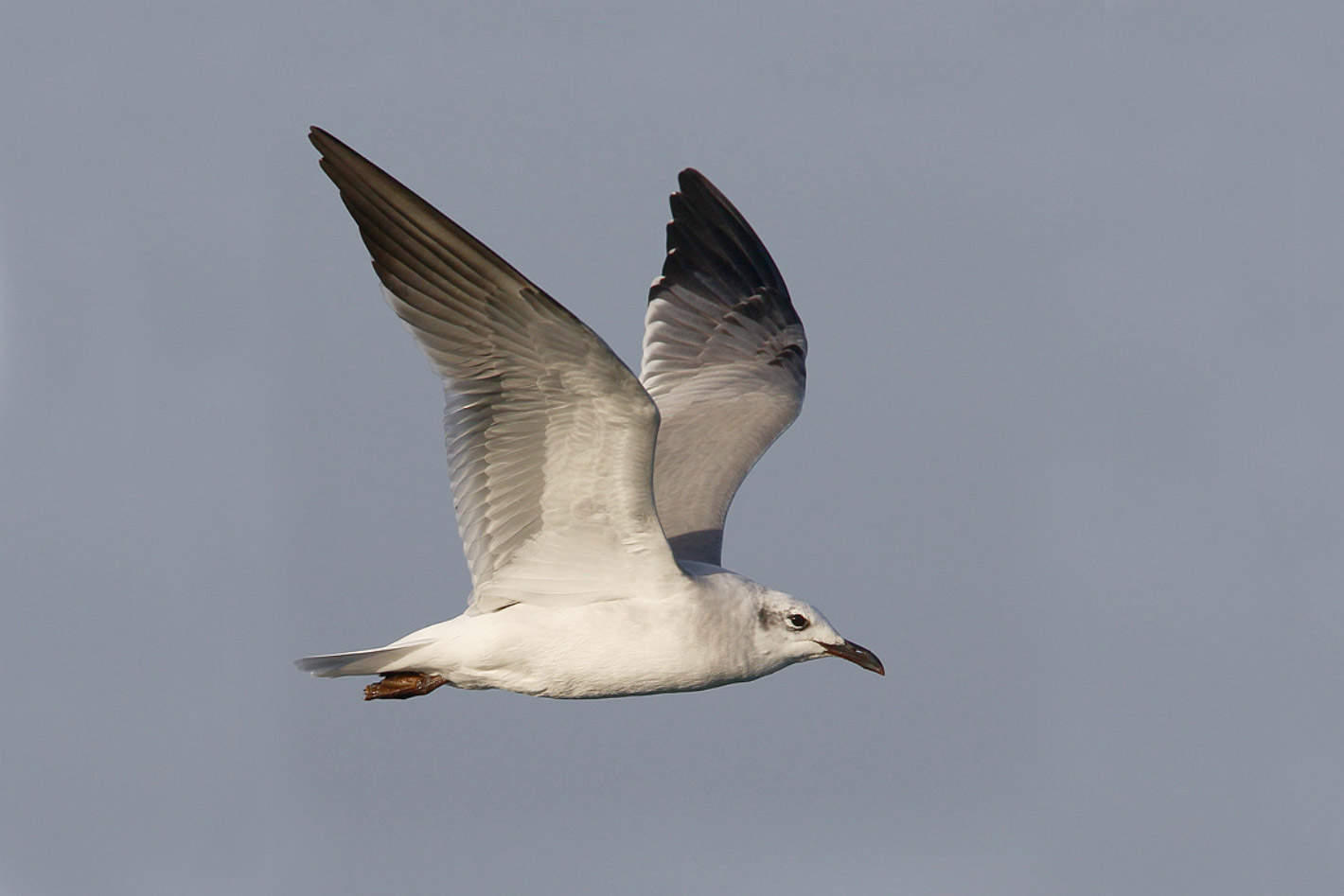
Second-winter Laughing Gull (Ballycotton, Co Cork, January 2015). Note the extensively black upperside to the primaries, with virtually no white on show at the tips. The underwing appears extensively but diffusely dark, being darkest towards the tips of the primaries. A light greyish wash to the neck and flanks, as well as the blackish primary coverts, age this as a second-winter bird rather than adult. The bill also looks heavy and long and the head is largely clean, save for restricted dark markings on the ear coverts and around the eye (Richard Smith).
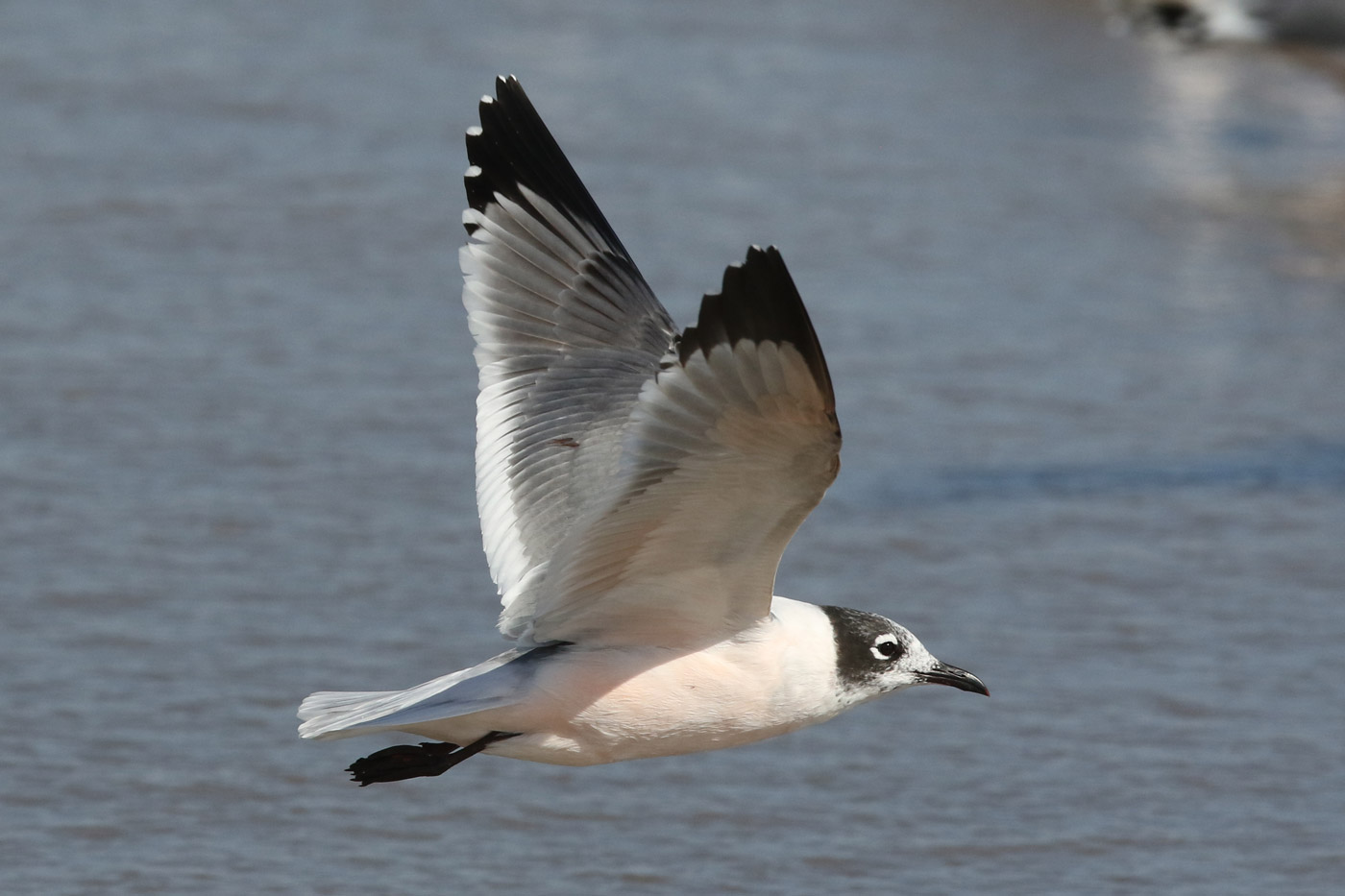
Second-winter Franklin's Gull (Arica, Chile, 11 April 2017). This bird could be taken for a Laughing Gull, but note the more obvious whitish tips to the primaries and the very broad white trailing edge to the entire wing, as well as the typical Franklin's 'half-hood' and contrasting white eyelids. Crucially, the underwing pattern is crisp and contrasting, with the blackish underside to the primary tips being sharply demarcated from the greyish secondaries and primary bases – such distinction is never seen in Laughing. Also note the pinkish wash to the clean white underparts, and lack of a grey wash to the neck (Richard Bonser).
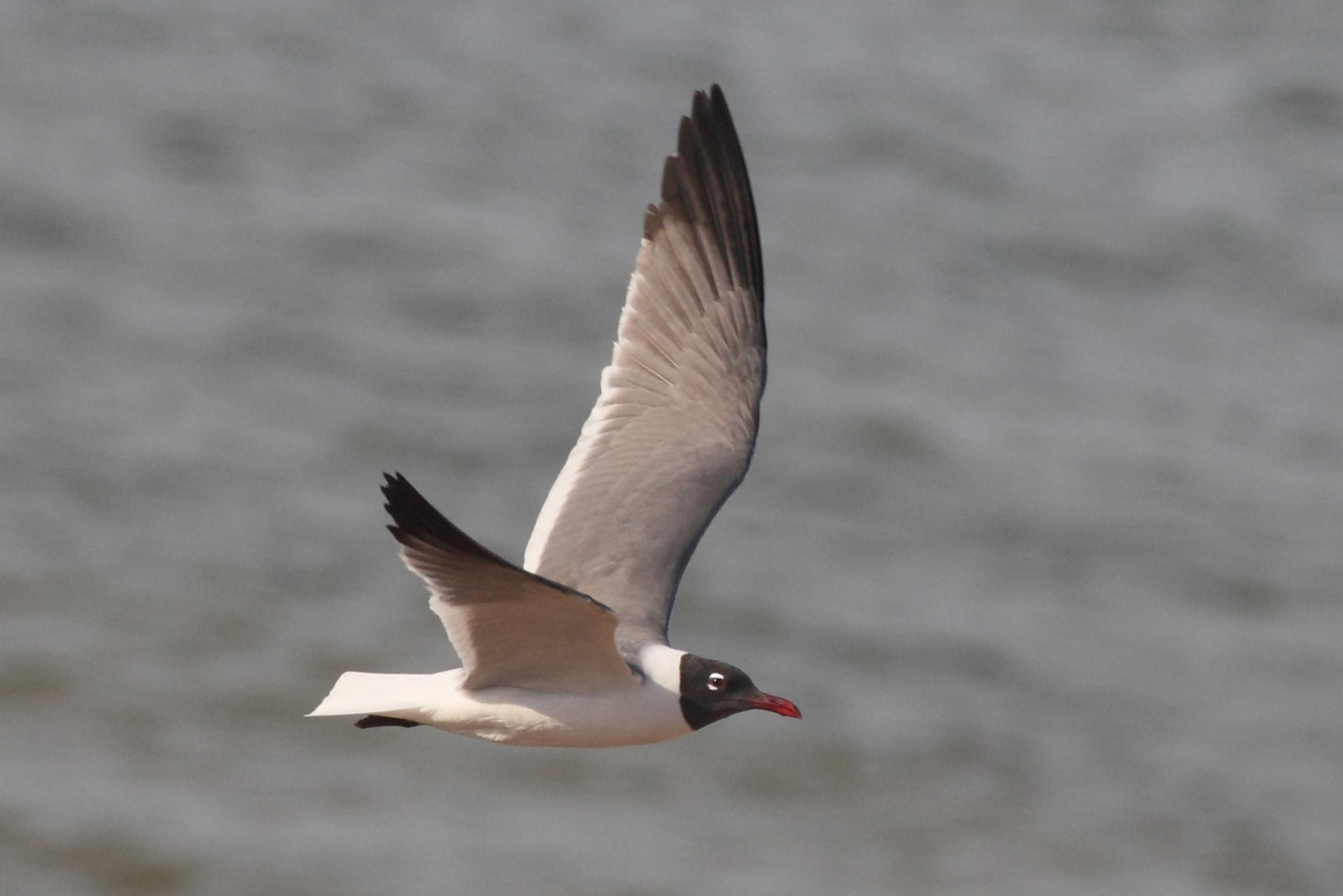
Adult summer Laughing Gull (Dungeness, Kent, 26 May 2016). This bird has a deep red bill, but is readily identified as a Laughing Gull by its completely black primary tips and rangy structure, as well as the long and relatively heavy bill structure. The underwing also looks dark from below, being blackest at the primary tips (James Lowen / www.jameslowen.com).
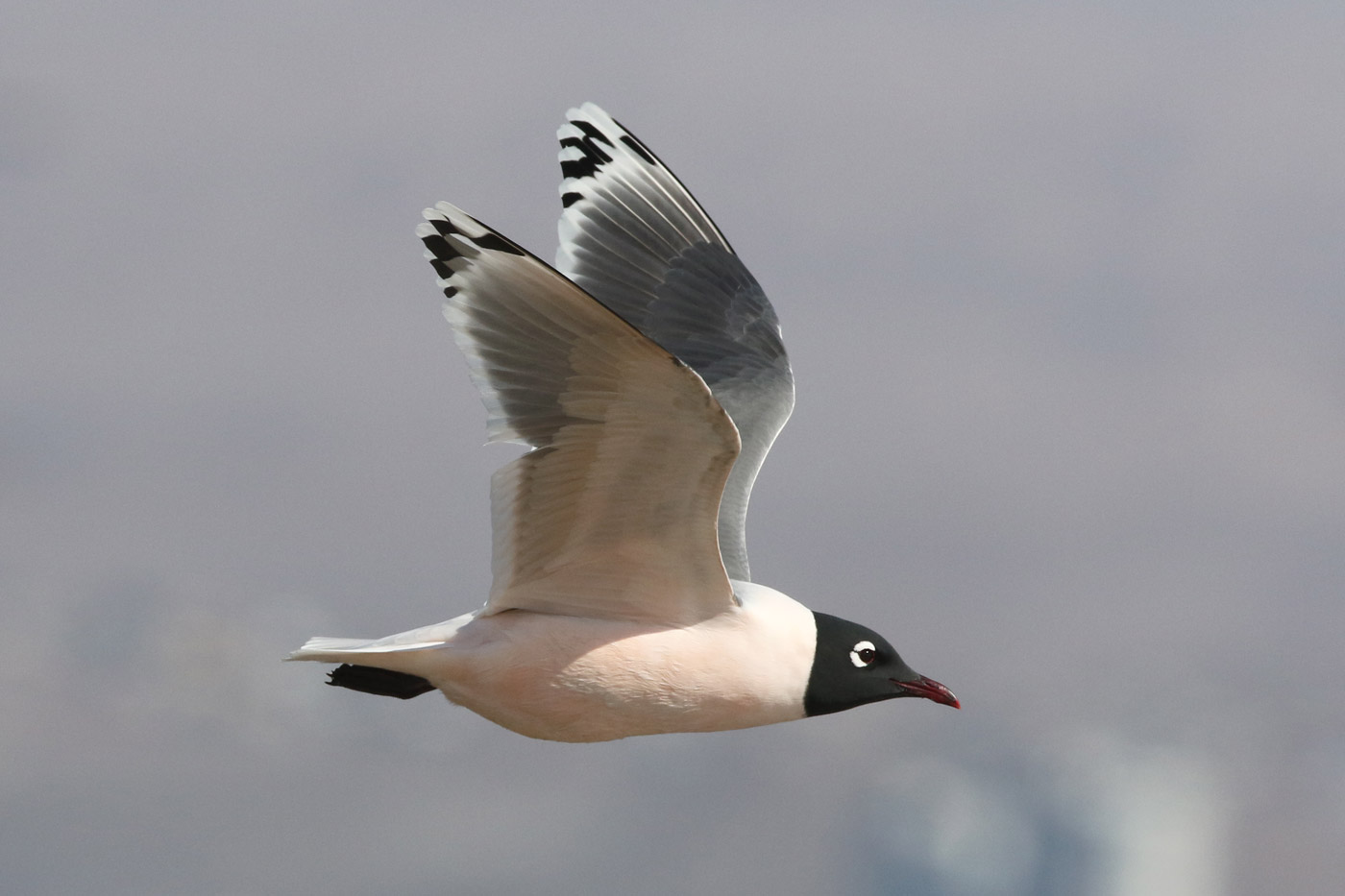
Adult summer Franklin's Gull (Arica, Chile, 11 April 2017). With more white than black in the primaries (the black actually consisting of residual markings on a white wingtip), this breeding-plumaged Franklin's Gull is instantly discernible from a similarly aged Laughing. However, note also the broad, rounded wing shape, overall 'squatter' appearance than Laughing and the attractive pink flush to the underparts (Richard Bonser).
- This article was originally published in the April 2020 issue of Birdwatch magazine.




